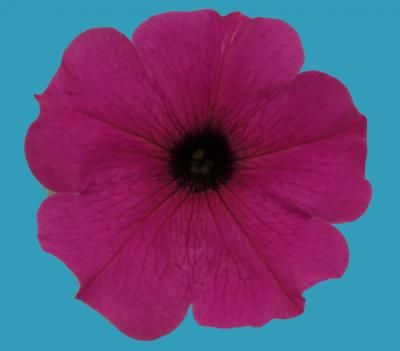Roses are red -- why some petunias are blue
Advertisement
Researchers have uncovered the secret recipe to making some petunias such a rare shade of blue. The findings may help to explain and manipulate the color of other ornamental flowers, not to mention the taste of fruits and wine, say researchers. From the flowers' point of view, the findings also have important implications, since blue petals instead of red might spell disaster when it comes to attracting pollinators.

Researchers have uncovered the secret recipe to making some petunias such a rare shade of blue. The findings may help to explain and manipulate the color of other ornamental flowers, not to mention the taste of fruits and wine, say researchers who report their findings in the Cell Press journal Cell Reports on January 2nd. From the flowers' point of view, the findings also have important implications, since blue petals instead of red might spell disaster when it comes to attracting pollinators.
Cell Reports, Faraco et al.
The key discovery is a kind of cellular pump that was previously unknown in plants. When that pump fails to work properly, as it does in some petunias, the flower petals can't acidify special compartments within their cells. As a result, those petals turn blue instead of red or violet – much like the litmus paper many of us will recall from chemistry class.
"Blue flower colors have been enigmatic for a long time and the blue rose appears in many myths, legends, and even operas," said Francesca Quattrocchio of the VU-University in Amsterdam. "Already in the 1910s it was proposed that blue flower colors were caused by reduced acidity of the 'cell sap.' Others figured that drastic changes in the cell sap might cause terrible deleterious defects, and proposed that blue flower colors had something to do with the formation of metal-anthocyanin complexes. Our current opinion is that both got it right."
Still, no one really knew how it worked. Scientists discovered one type of proton pump in the 1980s. "Over the decades, the idea took hold that all H+ transport across internal membranes is driven by those v-ATPases," Ronald Koes of VU-University in the Netherlands explained. Not so, the new work shows.
In most cells, there are but modest differences in pH between the insides and the outsides of intracellular compartments or vacuoles. Petals, by comparison, can show much steeper pH gradients. Scientists also knew that the differences in pH between blue petunia petals and red ones were somehow connected to a handful of so-called PH genes.
Quattrocchio and Koes now find that those genes encode a proton-pumping pathway that allows petal cells, and perhaps other cells as well, to hyperacidify particular compartments. The pump is composed of two distinct proteins, which together keep on going – and building acidity – even when other pumps would stop. Blue petunias are blue because of genetic defects that leave that special pumping system out of order.
"By studying the difference between blue and red flowers of petunias, we have discovered a novel type of transporter able to strongly acidify the inside of the vacuole," Quattrocchio said.
Now they have the tools to isolate plant varieties with different acidification levels in their vacuoles, she added, and that could prove very fruitful indeed when it comes to generating new colors in valuable flowers or new tastes in fruits, wines, and juices. The researchers say those more acidic vacuoles and the pumps that make them possible might even be exploited as reservoirs for storing toxic compounds, such as metals and salts.
Original publication
Faraco et al.: "Hyperacidification of vacuoles by the combined action of two different P-ATPases in the tonoplast determines flower color..", Cell Reports, 2014.






















































